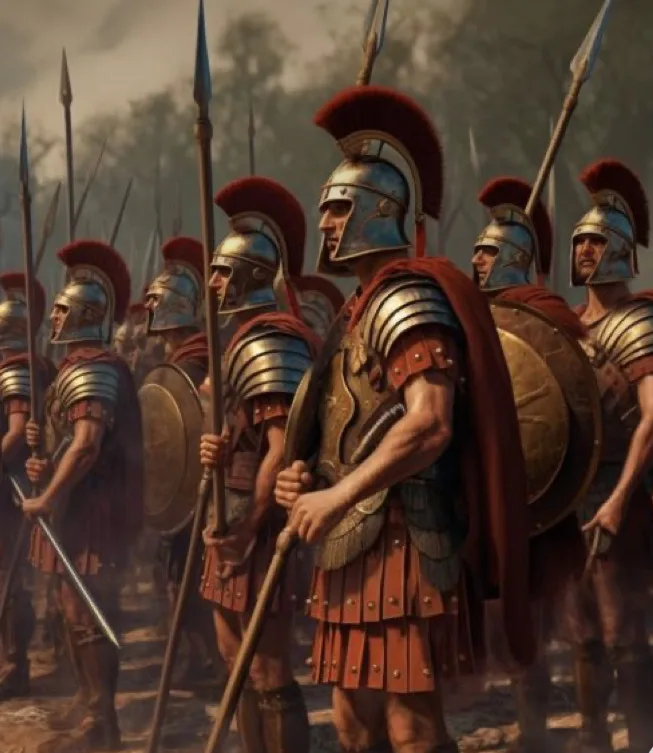Top 10 most powerful militaries of all time are:
1.Roman Empire
2.British Empire
3.Mongol Empire
4.United States
5.Soviet Union
6.Nazi Germany
7.Ottoman Empire
8.Empire of Japan
9.Napoleonic France
10.Qin Dynasty
1.Roman Empire
(27 BC –476 AD)
The Roman Empire is considered one of the most powerful and influential military forces in history. Here are some key points that highlight the strength and significance of the Roman military:
- Organization and Structure: The Roman military was highly organized and structured. The basic unit was the legion, consisting of about 4,500 to 6,000 soldiers. Legions were further divided into cohorts and centuries, each with specific roles and functions. The professional nature of the Roman army, including rigorous training and discipline, contributed to its effectiveness.
- Tactics and Strategy: Roman military tactics were advanced and adaptable. The Romans employed a variety of formations and strategies to outmaneuver and defeat their enemies. Notable tactics include the use of the testudo (tortoise) formation for protection against projectiles and the flexibility of the manipular legion system, which allowed for better maneuverability on the battlefield.
- Engineering and Logistics: The Romans excelled in military engineering and logistics. They built an extensive network of roads, bridges, and fortifications, which facilitated rapid troop movements and efficient supply lines. The construction of forts and camps (castra) was highly standardized, enhancing their defensive capabilities.
- Equipment and Weaponry: Roman soldiers were equipped with advanced weaponry and armor for their time. This included the gladius (short sword), pilum (javelin), and scutum (shield). Roman armor, such as the lorica segmentata (segmented armor), provided both protection and mobility.
- Naval Power: The Roman navy played a crucial role in securing and expanding the empire. It protected trade routes, supported land campaigns, and enabled the Romans to project their power across the Mediterranean Sea. The navy’s success was particularly evident in the Punic Wars against Carthage.
- Expansion and Conquests: The Roman military was instrumental in the expansion of the Roman Empire. Through a combination of military conquests, diplomacy, and integration of conquered peoples, the Romans built one of the largest empires in history. Key conquests included Gaul, Britain, the Balkans, and parts of the Middle East and North Africa.
- Leadership and Command: The Roman military benefited from skilled and experienced leaders. Generals such as Julius Caesar, Scipio Africanus, and Trajan demonstrated exceptional military prowess and strategic insight. Their leadership played a critical role in securing Roman victories and expanding the empire.
- Adaptability and Innovation: The Roman military was known for its ability to adapt and innovate. It incorporated new tactics, weapons, and practices from conquered peoples and constantly evolved to meet new challenges. This adaptability helped maintain Roman dominance for centuries.
- Civil Engineering Projects: Beyond military purposes, Roman engineering projects such as roads, aqueducts, and cities also served military needs by ensuring efficient supply and communication lines, enabling quick troop deployments, and fortifying key locations.
- Legacy and Influence: The legacy of the Roman military extends beyond the fall of the Roman Empire. Roman military principles, tactics, and organization have influenced many subsequent military forces throughout history. The Roman model of a professional, disciplined, and well organized army set a standard for future generations.
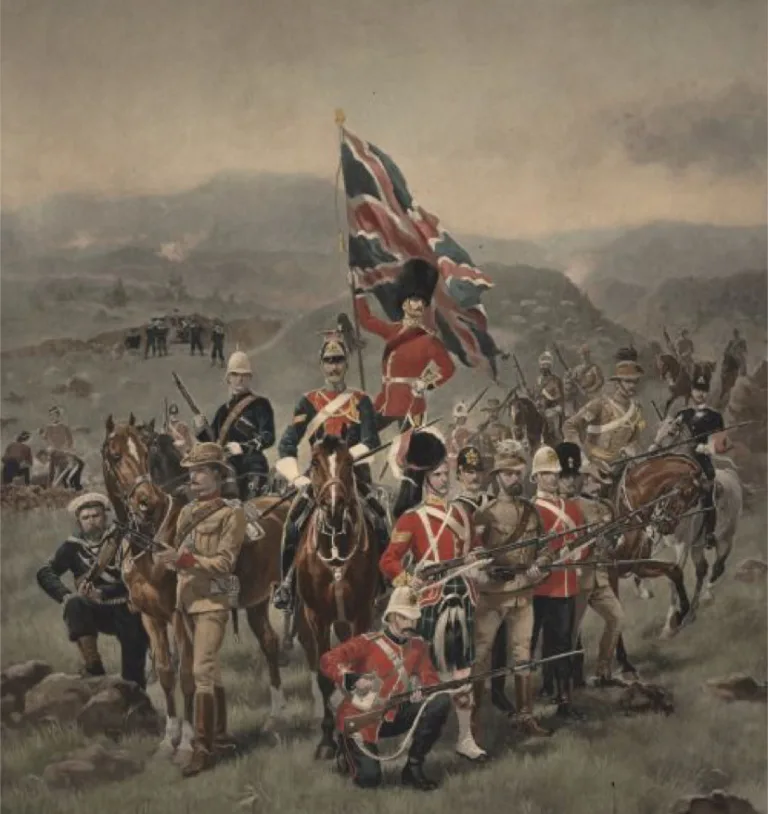
2.British Empire
(16th century – 20th century)
The British Empire was one of the most powerful military forces in history.
- Global Naval Dominance: The British Royal Navy was the most powerful naval force for much of the 18th, 19th, and early 20th centuries. Its dominance was crucial in protecting trade routes, projecting power globally, and supporting colonial expansion. Key victories, such as the Battle of Trafalgar in 1805, solidified British naval supremacy.
- Empire Expansion: The British military played a central role in the expansion of the British Empire, which at its height, was the largest empire in history. The military facilitated the colonization of vast territories across Africa, Asia, the Americas, and the Pacific.
- Technological Innovation: The British military was often at the forefront of technological innovation. The Industrial Revolution, which began in Britain, led to advancements in weaponry, shipbuilding, and logistics. Innovations like the Dreadnought class battleship and early tanks during World War I exemplify this technological edge.
- Professional Army: The British Army, while smaller in size compared to some continental powers, was highly professional and well trained. The establishment of a standing army and the development of military academies, such as the Royal Military Academy Sandhurst, ensured a high standard of military leadership and training.
- Colonial Armies: The British Empire relied heavily on colonial troops. Soldiers from colonies such as India, Australia, Canada, and Africa played crucial roles in British military campaigns. The Indian Army, for instance, was one of the largest volunteer armies in history and was instrumental in both World Wars.
- Strategic Fortifications: The British constructed a network of strategic fortifications around the world. Fortresses in key locations like Gibraltar, Malta, and Singapore served as bases for naval and military operations, ensuring control over crucial maritime chokepoints and trade routes.
- Key Military Campaigns: The British military was involved in numerous significant conflicts that shaped world history. These include the Napoleonic Wars, the Crimean War, the Boer Wars, and both World Wars. British involvement in these conflicts often had decisive impacts on their outcomes.
- Intelligence and Espionage: The British military was supported by an effective intelligence apparatus. Organizations like MI6 (Secret Intelligence Service) and Bletchley Park (codebreaking center) played pivotal roles in gathering intelligence and breaking enemy codes, most notably during World War II.
- Logistics and Supply: The British military excelled in logistics and supply chain management, which was crucial for sustaining long distance military campaigns. The ability to supply and reinforce distant colonies and battlefronts was a key factor in maintaining the British Empire.
- Economic and Industrial Power: The British military’s strength was underpinned by the economic and industrial might of Britain. The wealth generated by trade and the Industrial Revolution provided the resources needed to build and maintain a powerful military.
- Training and Doctrine: British military training and doctrine were influential worldwide. The British Army’s focus on discipline, combined arms tactics, and flexibility in operations became a model for other nations. The training of colonial forces also spread British military practices globally.
- Alliances and Diplomacy: The British military benefited from a network of alliances. The concept of “balance of power” in Europe often saw Britain forming coalitions against dominant powers like Napoleonic France and Imperial Germany. In both World Wars, alliances with other major powers were crucial to the eventual victories.
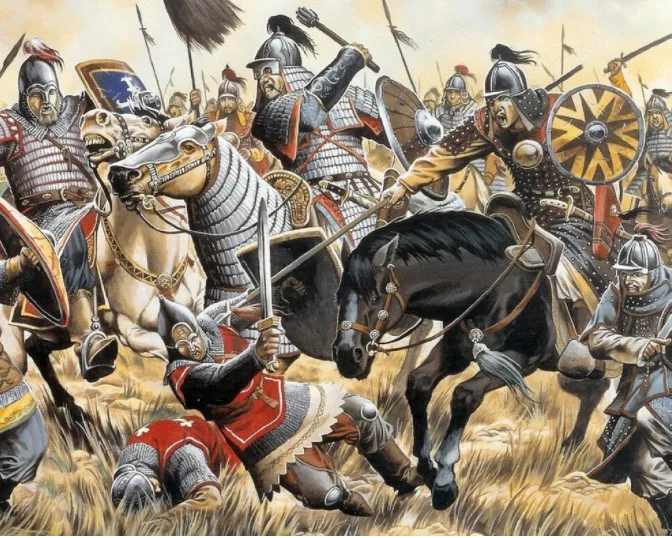
3.Mongol Empire
(1206-1368)
The Mongol Empire is considered one of the most powerful military forces in history.
- Leadership and Strategy: The Mongol military’s success can be largely attributed to the leadership of Genghis Khan and his successors. Genghis Khan’s strategic genius, organizational skills, and innovative military tactics transformed the Mongols into an unstoppable force.
- Highly Mobile Cavalry: The Mongol army was primarily composed of highly skilled horsemen who excelled in mounted archery. Their ability to move quickly and strike with precision allowed them to outmaneuver and defeat larger and more static armies.
- Effective Use of Intelligence: The Mongols employed a sophisticated intelligence network to gather information about their enemies. They used spies, scouts, and local informants to understand the terrain, enemy strengths, and weaknesses, which enabled them to plan their campaigns meticulously.
- Psychological Warfare: The Mongols effectively used psychological warfare to instill fear and confusion among their enemies. Their reputation for brutality and ruthlessness preceded them, often leading to the surrender of cities and armies without a fight.
- Discipline and Organization: The Mongol military was highly disciplined and organized. Units were structured in a decimal system, with groups of 10 (arban), 100 (zuun), 1,000 (mingghan), and 10,000 (tumen) men. This structure allowed for efficient command and control during campaigns.
- Adaptability and Innovation: The Mongols were adept at adopting new technologies and tactics from the peoples they conquered. They incorporated siege warfare techniques, engineering skills, and diverse weaponry into their own arsenal, making them versatile in different combat situations.
- Logistics and Mobility: The Mongols maintained a highly efficient logistical network, utilizing relay stations and supply depots to sustain their armies over vast distances. Their mobility and ability to live off the land allowed them to conduct long range campaigns without the need for extensive supply lines.
- Integration of Conquered Peoples: The Mongols were pragmatic in integrating conquered peoples into their military. Skilled soldiers, engineers, and administrators from subjugated regions were often incorporated into the Mongol army, enhancing its capabilities.
- Decisive Battles and Conquests: The Mongols achieved numerous decisive victories that expanded their empire rapidly. Key battles, such as the Battle of Kalka River (1223), the Siege of Baghdad (1258), and the Battle of Legnica (1241), demonstrated their military prowess and contributed to the vast expansion of their empire.
- Global Impact: The Mongol conquests had a profound impact on world history. They facilitated trade and cultural exchanges across the Eurasian continent through the Pax Mongolica, a period of relative peace and stability under Mongol rule. The Mongol Empire connected the East and West, enabling the flow of goods, ideas, and technologies.
- Innovative Communication: The Mongols developed an extensive communication network known as the Yam system, a relay system of mounted couriers that allowed for rapid communication across their vast empire. This system was crucial for coordinating military campaigns and administering the empire.
- Legacy: The legacy of the Mongol military is evident in their influence on subsequent military strategies and tactics. Their emphasis on mobility, discipline, and psychological warfare set a standard for future armies. The Mongol Empire’s impact on trade, culture, and political landscapes continues to be studied and admired.
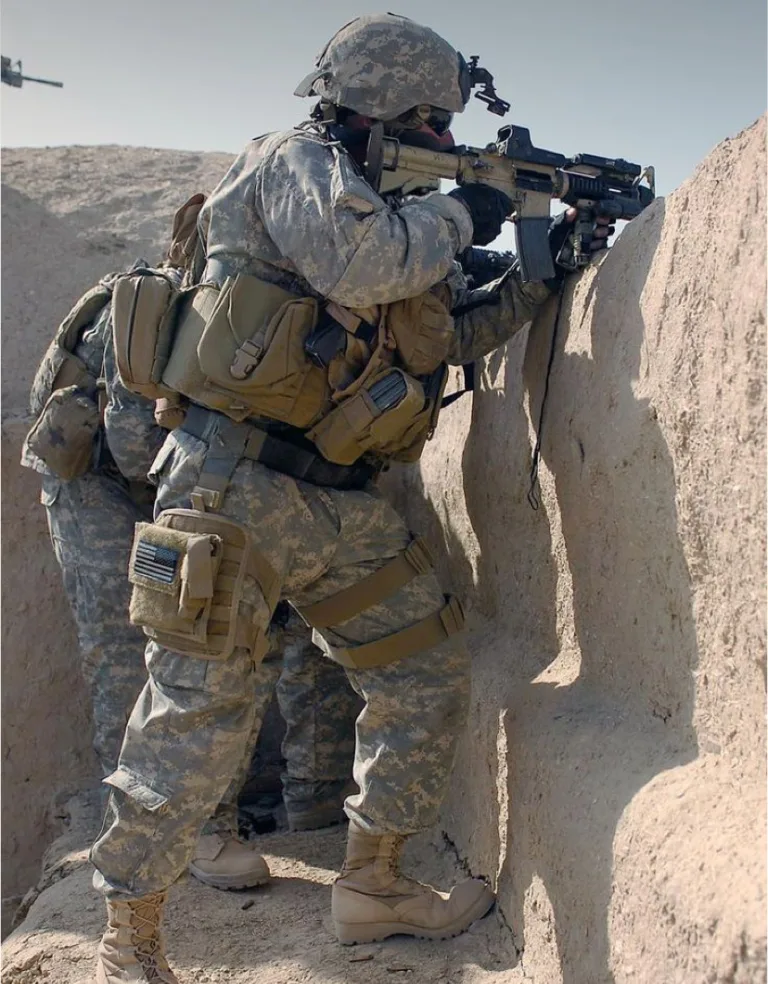
4.United States
(1941 – present)
The United States military is widely regarded as one of the most powerful military forces of all time.
- Global Reach and Presence: The United States maintains a global military presence with numerous bases and deployments around the world. This extensive network allows the U.S. to project power and respond to crises anywhere on the globe.
- Advanced Technology: The U.S. military invests heavily in cutting edge technology, making it a leader in military innovation. This includes advancements in stealth technology, precision guided munitions, drones, cyber capabilities, and space operations.
- Robust Economy and Defense Budget: The U.S. has one of the largest defense budgets in the world, enabling sustained investment in military capabilities. This financial power supports extensive research and development, procurement of advanced weapons systems, and maintenance of a highly professional force.
- Diverse and Capable Forces: The U.S. military is composed of five branches: the Army, Navy, Air Force, Marine Corps, and Space Force. Each branch has specialized capabilities and operates together in a joint force structure, enhancing overall effectiveness.
- Nuclear Arsenal: The United States possesses one of the most powerful nuclear arsenals, which serves as a cornerstone of its national security strategy. The triad of land based missiles, submarine launched ballistic missiles, and strategic bombers ensures a credible deterrent.
- Global Alliances and Partnerships: The U.S. has a network of alliances and partnerships, most notably NATO (North Atlantic Treaty Organization). These alliances enhance collective security and enable cooperative defense initiatives, contributing to global stability.
- Professional and Volunteer Force: The U.S. military is a professional, all volunteer force known for its rigorous training, high standards, and discipline. The recruitment and retention of skilled personnel are key to maintaining its effectiveness.
- Operational Experience: The U.S. military has extensive operational experience from numerous conflicts and missions around the world. This includes major wars such as World War II, the Korean War, the Vietnam War, and more recent conflicts in Iraq and Afghanistan. This experience has honed its capabilities and readiness.
- Logistics and Supply Chain: The U.S. military has an unparalleled logistical capability, allowing it to sustain operations over long distances and in diverse environments. Its ability to deploy and support large forces quickly and efficiently is a significant advantage.
- Naval Power: The U.S. Navy is the most powerful naval force globally, with a fleet that includes aircraft carriers, submarines, destroyers, and amphibious assault ships. The ability to project power through carrier strike groups is a key component of U.S. military strategy.
- Special Operations Forces: The U.S. military has highly trained special operations forces, including Navy SEALs, Army Rangers, Green Berets, and Delta Force. These units conduct specialized missions, including counterterrorism, unconventional warfare, and direct action.
- Cyber and Space Capabilities: The U.S. has developed significant capabilities in cyber warfare and space operations. The establishment of the U.S. Space Force highlights the importance of space as a domain for military operations, while U.S. Cyber Command focuses on defending against and conducting cyber operations.
- Humanitarian and Disaster Response: The U.S. military also plays a vital role in humanitarian assistance and disaster response globally. Its ability to mobilize quickly and provide aid during natural disasters, pandemics, and other crises demonstrates its versatility and commitment to global stability.
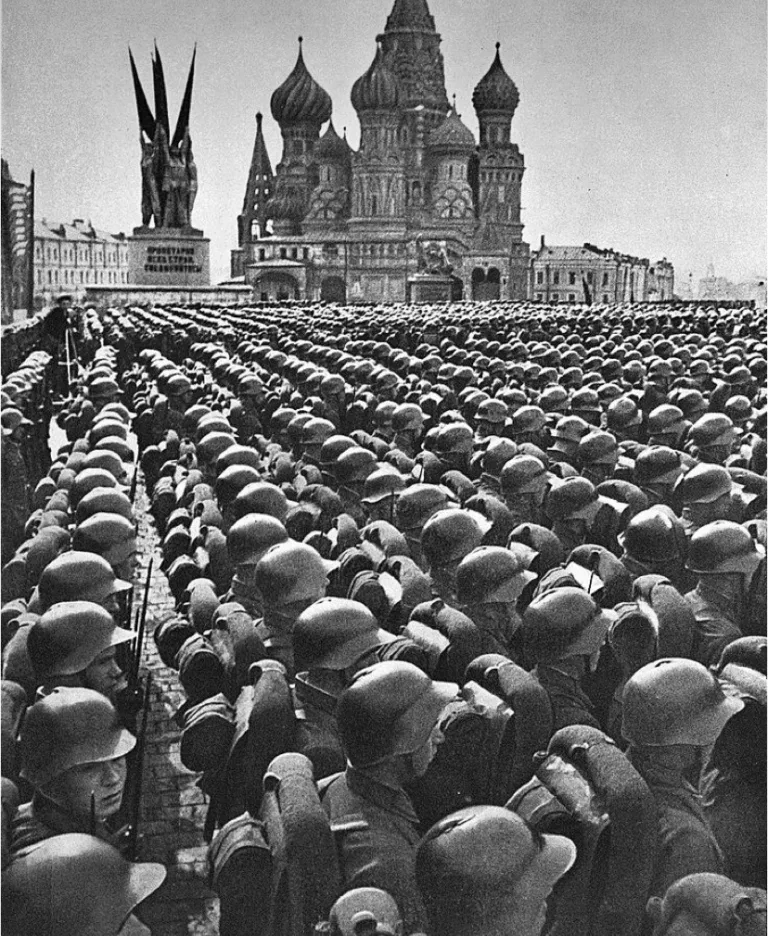
5.Soviet Union
(20th century)
The Soviet Union’s military was one of the most powerful military forces of all time, especially during the mid-20th century.
- Massive Manpower: The Soviet military was known for its sheer size. During World War II, the Red Army mobilized millions of soldiers, making it one of the largest armies in history. This massive manpower was a critical factor in its ability to engage in extensive, prolonged military campaigns.
- World War II Victories: The Soviet military played a decisive role in the defeat of Nazi Germany. Key battles, such as the Battle of Stalingrad and the Battle of Kursk, were turning points in the war. The Red Army’s advance from the east eventually led to the capture of Berlin in 1945.
- Technological Innovation: The Soviet Union invested heavily in military technology and innovation. This included advancements in tank design, aircraft, and the development of a powerful nuclear arsenal.
- Nuclear Capabilities: The Soviet Union developed one of the largest nuclear arsenals in the world, becoming a superpower in the nuclear arms race. The development of intercontinental ballistic missiles and submarine launched ballistic missiles ensured a credible nuclear deterrent.
- Cold War Era: During the Cold War, the Soviet military was a central component of the superpower rivalry with the United States. The Soviet Union maintained a vast conventional and strategic force, capable of global reach and influence.
- Military Doctrine and Strategy: Soviet military doctrine emphasized large scale, high intensity warfare, often characterized by deep operations and the use of combined arms tactics. This doctrine was based on lessons learned from World War II and was designed to exploit breakthroughs in enemy lines using armor and mechanized infantry.
- Space and Missile Technology: The Soviet Union was a pioneer in space technology, launching the first artificial satellite, Sputnik, and the first human, Yuri Gagarin, into space. These achievements were closely linked to military capabilities, particularly in missile technology and reconnaissance satellites.
- Industrial Base: The Soviet Union’s industrial base was heavily oriented toward military production. This allowed for the rapid production and deployment of military hardware, including tanks, aircraft, ships, and ballistic missiles.
- Military Training and Education: The Soviet Union placed a strong emphasis on military education and training. Institutions like the Frunze Military Academy and the General Staff Academy produced highly trained officers who were well versed in Soviet military doctrine and strategy.
- Intelligence and Espionage: The Soviet military benefited from an extensive intelligence and espionage network. The KGB (Committee for State Security) played a key role in gathering intelligence, conducting espionage, and ensuring internal security within the military.
- Global Influence and Proxy Wars: The Soviet military supported numerous proxy wars and conflicts around the world, extending its influence in regions such as Africa, Asia, and Latin America. Soviet military advisors, equipment, and training were provided to allied and client states.
- Naval Power: The Soviet Navy, while not as dominant as the U.S. Navy, was a formidable force with significant submarine capabilities. The development of nuclear powered submarines and a strong emphasis on anti-ship missiles added to its strategic capabilities.
- Legacy and Impact: The legacy of the Soviet military continues to influence the Russian Federation, its successor state. Many of the tactics, strategies, and technologies developed during the Soviet era remain relevant and are built upon by the modern Russian military.
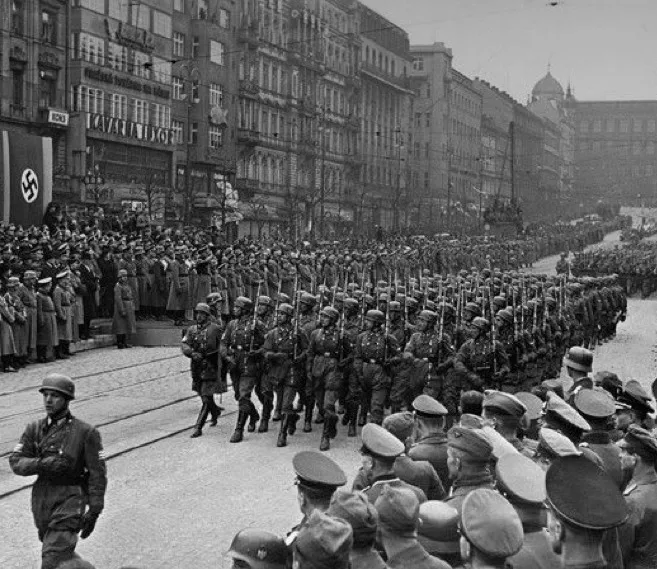
6.Nazi Germany
(1930–1945)
Nazi Germany’s military known as Wehrmacht, was one of the most powerful and advanced military forces of its time.
- Blitzkrieg Tactics: The Wehrmacht is best known for developing and implementing Blitzkrieg (lightning war) tactics, which emphasized speed, surprise, and coordinated attacks using tanks, infantry, and air power. This strategy led to the rapid conquest of large parts of Europe, including Poland, France, and the Low Countries.
- Advanced Technology and Weaponry: Nazi Germany invested heavily in military technology and innovation. This included the development of advanced tanks, aircraft, and the first operational jet fighter (the Messerschmitt Me 262).
- Effective Use of Combined Arms: The Wehrmacht excelled in the use of combined arms operations, integrating infantry, armor, artillery, and air support to achieve battlefield objectives. This approach maximized the effectiveness of each component.
- Training and Doctrine: German military training was rigorous and emphasized leadership, initiative, and tactical flexibility. The officer corps was highly professional, with a strong emphasis on mission type tactics, which allowed lower level commanders to make decisions based on the situation on the ground.
- Naval Power and U-boats: The Kriegsmarine (German Navy) posed a significant threat to Allied shipping during the Battle of the Atlantic. German U-boats (submarines) targeted and sank numerous Allied merchant ships, disrupting supply lines and posing a strategic challenge to the Allies.
- Rocketry and V-Weapons: Nazi Germany made significant advancements in rocketry, developing the V-1 flying bomb and the V-2 rocket, the world’s first long-range guided ballistic missile. These weapons caused considerable damage in Britain and showcased Germany’s technological capabilities.
- Military Engineering: German military engineering was advanced, producing effective fortifications like the Atlantic Wall and pioneering the use of specialized combat engineering units that played key roles in breaching enemy defenses and constructing battlefield infrastructure.
- Elite Units: The Wehrmacht included several elite units, such as the Waffen-SS and the Fallschirmjäger (paratroopers). These units were known for their combat effectiveness, discipline, and ability to conduct specialized operations.
- Scientific and Industrial Support: Nazi Germany’s military benefited from a robust industrial base and scientific community that supported war efforts through innovations in weaponry, vehicles, and logistics. This included advancements in fields such as metallurgy, chemistry, and ballistics.
- Propaganda and Psychological Warfare: The Nazi regime effectively used propaganda to bolster the morale of its troops and population, while also employing psychological warfare to intimidate and demoralize enemies. This played a role in the overall military strategy and public perception.
- Challenges and Limitations: Despite its early successes, the Wehrmacht faced significant challenges. These included overstretched supply lines, strategic overreach, and the failure to anticipate and adapt to the harsh conditions of the Eastern Front. The invasion of the Soviet Union (Operation Barbarossa) ultimately proved to be a turning point, as the Wehrmacht struggled with logistical issues and fierce Soviet resistance.
- Decline and Defeat: By 1944, the tide of war had turned against Nazi Germany. The Allies’ superior industrial capacity, combined with strategic bombings, the opening of multiple fronts, and the effective coordination of Allied forces, led to the eventual defeat of the Wehrmacht. Key battles, such as Stalingrad, Normandy, and the Battle of the Bulge, highlighted the declining effectiveness of German forces.
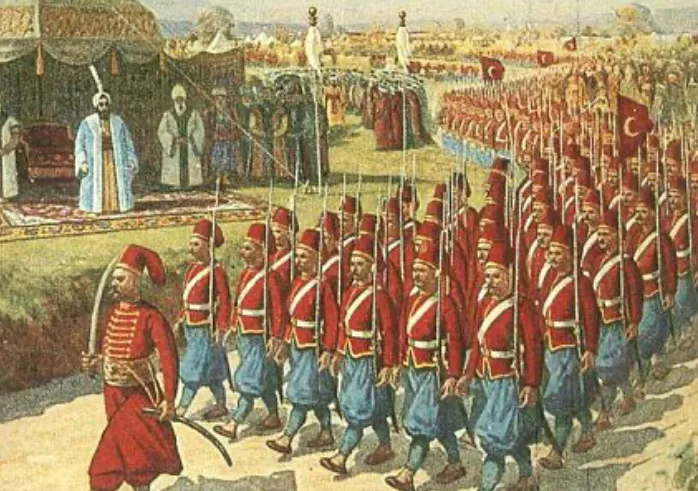
7.Ottoman Empire
(14th century – 20th century)
The Ottoman Empire’s military was one of the most powerful and enduring military forces in history.
- Long-lasting Empire: The Ottoman Empire lasted for over 600 years, from the late 13th century to the early 20th century. Its longevity was largely due to its formidable military capabilities and strategic adaptability.
- Strategic Location: The Ottoman Empire’s strategic location, bridging Europe and Asia, allowed it to control key trade routes and exert influence over a vast region. This strategic advantage played a crucial role in its military and economic power.
- Professional Standing Army: The Ottomans were among the first to maintain a professional standing army, known as the Janissaries. These elite infantry units were highly trained, disciplined, and loyal to the Sultan, making them a formidable force on the battlefield.
- Effective Use of Gunpowder: The Ottoman military was an early adopter of gunpowder technology. They used cannons and firearms effectively, which played a significant role in their military campaigns, such as the conquest of Constantinople in 1453.
- Naval Power: The Ottoman Navy was a dominant force in the Mediterranean, Red Sea, and Persian Gulf. It played a crucial role in securing trade routes, projecting power, and engaging in naval battles, such as the Battle of Lepanto in 1571.
- Military Architecture and Engineering: The Ottomans excelled in military architecture and engineering. They built impressive fortresses, walls, and other defensive structures that enhanced their military capabilities. The fortifications of cities like Constantinople and the development of the Rumeli Fortress are notable examples.
- Conquests and Expansion: The Ottoman military was instrumental in the empire’s expansion. Key conquests included the capture of Constantinople, the Balkans, the Middle East, North Africa, and parts of Eastern Europe. The Battle of Mohács (1526) and the Siege of Vienna (1529) are notable examples of their military prowess.
- Multinational Army: The Ottoman military was diverse, comprising soldiers from various ethnic and religious backgrounds within the empire. This diversity allowed the Ottomans to leverage different skills and knowledge, enhancing their overall military effectiveness.
- Innovative Military Organization: The Ottomans developed a sophisticated military organization. The Timar system, for instance, provided land to cavalry officers in exchange for military service, creating a feudal like system that supported a large, well equipped cavalry.
- Diplomacy and Alliances: The Ottoman military strategy included effective use of diplomacy and alliances. They formed alliances with European powers when beneficial and used marriage, treaties, and other diplomatic means to secure their interests and expand their influence.
- Logistics and Supply: The Ottomans had an efficient logistics system that supported their military campaigns. They established supply depots, transportation networks, and communication lines that enabled them to sustain long distance campaigns and manage vast territories.
- Administrative Reforms: The Ottomans implemented significant administrative reforms to support their military efforts. The Devshirme system, which recruited Christian boys into military and administrative service, helped create a loyal and skilled administrative and military elite.
- Impact on Europe and the Middle East: The Ottoman military had a profound impact on European and Middle Eastern politics, economics, and culture. Their presence in Europe influenced the balance of power, and their control over key regions shaped trade and cultural exchanges.
- Cultural and Scientific Contributions: The Ottomans also made significant contributions to culture and science, which indirectly supported their military capabilities. Advances in cartography, medicine, and engineering during the Ottoman period were integral to their military success.
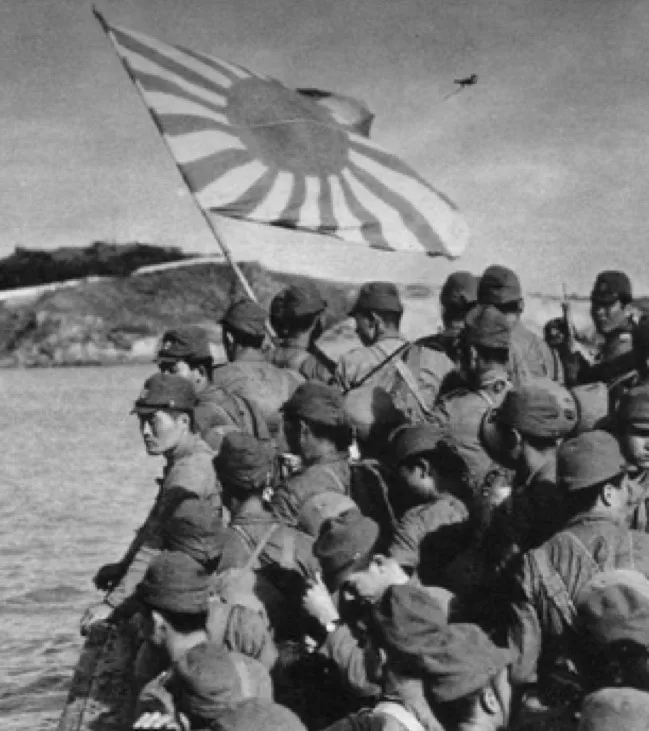
8.Empire of Japan
(1868-1945)
The Empire of Japan’s military was one of the most powerful military forces of its time, particularly during the early 20th century and World War II.
- Rapid Modernization: Following the Meiji Restoration in 1868, Japan undertook a rapid modernization of its military. The country adopted Western military technologies, strategies, and organizational structures, transforming its feudal samurai based forces into a modern, professional military.
- Naval Power: The Imperial Japanese Navy(IJN) was a dominant force in the Pacific. It became one of the most powerful navies in the world by the early 20th century, featuring advanced battleships, aircraft carriers, and submarines. The surprise attack on Pearl Harbor in 1941 demonstrated the reach and effectiveness of the IJN.
- Industrial and Technological Advancements: Japan invested heavily in industrial and technological advancements to support its military. This included the development of advanced aircraft, such as the Mitsubishi A6M Zero fighter, and powerful naval vessels, such as the Yamato-class battleships.
- Military Victories: The Japanese military achieved significant victories in the early stages of its expansion. Key successes included the Russo-Japanese War (1904-1905), where Japan defeated a major European power, and early World War II campaigns, where Japan rapidly expanded its territory across Asia and the Pacific.
- Strategic Doctrine: The Japanese military developed a strategic doctrine that emphasized speed, surprise, and decisive battles. This approach was evident in their early World War II campaigns, which saw swift and coordinated attacks that overwhelmed enemy forces.
- Samurai Legacy: The military ethos of the Japanese forces was heavily influenced by the samurai tradition, emphasizing discipline, honor, and loyalty. This cultural legacy contributed to the fighting spirit and resilience of Japanese soldiers.
- Amphibious Warfare: The Imperial Japanese Army (IJA) and Navy were adept at amphibious operations, enabling them to conduct successful landings on numerous islands across the Pacific. These operations were crucial for their strategy of territorial expansion.
- Kamikaze Tactics: As the war progressed and Japan faced increasing setbacks, they resorted to kamikaze (suicide) tactics. Pilots would deliberately crash their planes into enemy ships, demonstrating their willingness to sacrifice for the nation’s cause. This tactic caused significant damage to Allied naval forces.
- Influence and Control in Asia: At its peak, the Japanese Empire controlled vast territories, including Korea, Manchuria, parts of China, Southeast Asia, and numerous Pacific islands. This extensive control showcased the reach and power of its military forces.
- Military Leadership and Strategy: Japanese military leaders, such as Admiral Isoroku Yamamoto and General Hideki Tojo, played pivotal roles in planning and executing military campaigns. Their strategic vision and leadership were instrumental in Japan’s initial successes.
- Logistics and Supply Chains: Japan developed efficient logistics and supply chains to support its military operations across vast distances. This capability was essential for sustaining prolonged campaigns in remote regions.
- Resistance and Resilience: The Japanese military showed remarkable resilience, fighting tenaciously even in the face of overwhelming odds. Battles such as Iwo Jima and Okinawa demonstrated their determination to defend their positions to the last man.
- Military Training and Education: Japan established rigorous training programs and military academies to produce skilled and disciplined officers and soldiers. The emphasis on thorough preparation and training contributed to their operational effectiveness.
- End of the Empire: Despite its early successes, the Japanese military eventually faced defeat due to several factors, including the vast industrial and military capacity of the Allies, strategic mistakes, and the devastating impact of atomic bombings on Hiroshima and Nagasaki in 1945. Japan’s formal surrender marked the end of its imperial military power.
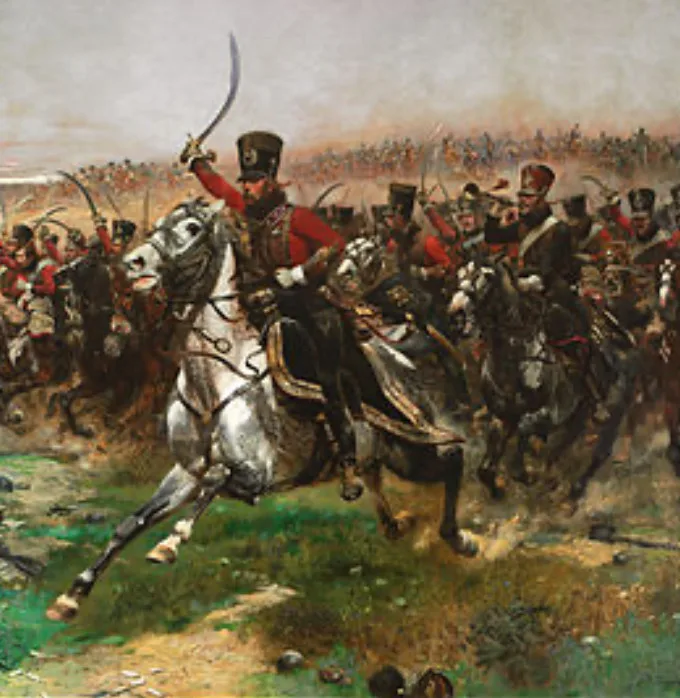
9.Napoleonic France
(early 19th century)
Napoleonic France’s military was one of the most powerful and influential forces of its time, reshaping Europe and leaving a lasting legacy on military tactics and organization.
- Revolutionary Origins: The French Revolutionary Wars (1792-1802) laid the groundwork for Napoleon’s rise. The revolutionary government reorganized the military, introducing conscription (Levée en masse) which created a large, motivated citizen army that replaced the previous professional, aristocratic officer led forces.
- Leadership of Napoleon Bonaparte: Napoleon’s military genius was central to the strength of his armies. His strategic foresight, tactical innovation, and ability to inspire his troops were critical factors in his many victories. Napoleon’s personal involvement in planning and executing military campaigns set him apart from many contemporary commanders.
- Grande Armée: The Grande Armée, Napoleon’s main military force, was renowned for its organization, discipline, and combat effectiveness. At its peak, it consisted of over 600,000 men from across the French Empire and its allies. This diverse force was well coordinated and adaptable to various combat scenarios.
- Tactical Innovations: Napoleon introduced several tactical innovations, such as the use of corps d’armée, self-contained units that could operate independently or together, providing flexibility and speed. His emphasis on artillery as the “king of battle” led to more effective use of firepower on the battlefield.
- Strategic Mobility: One of Napoleon’s key advantages was his focus on speed and mobility. He often moved his armies with unprecedented speed, allowing him to concentrate forces at decisive points and achieve surprise. This strategic mobility was crucial in campaigns such as the Ulm Campaign of 1805.
- Decisive Battles: Napoleon’s strategy often involved seeking decisive battles to quickly end conflicts. Major victories at Austerlitz (1805), Jena-Auerstedt (1806), and Friedland (1807) showcased his ability to deliver crushing defeats to his enemies, thereby altering the balance of power in Europe.
- Comprehensive Reforms: Napoleon’s reforms extended beyond the battlefield. He reorganized the French military administration, logistics, and training systems. The establishment of the French military school system, including the École Polytechnique and École Spéciale Militaire de Saint-Cyr, produced highly skilled officers.
- Grand Strategy and Continental System: Napoleon’s grand strategy involved dominating Europe through a combination of military might and economic warfare. The Continental System, aimed at disrupting British trade, was an attempt to weaken Britain economically, although it ultimately faced significant challenges.
- Coalition Wars: Napoleonic France fought against multiple coalitions of European powers, often simultaneously. Despite facing numerous adversaries, Napoleon’s ability to outmaneuver and outfight coalition forces repeatedly demonstrated the prowess of his military.
- Imperial Guard: The Imperial Guard was an elite unit within the Grande Armée, serving as both a reserve force and a symbol of Napoleon’s power. It consisted of veteran soldiers who were highly loyal and played crucial roles in many battles.
- Engineering and Siege Warfare: French engineers under Napoleon excelled in siege warfare and fortifications. The expertise in building and besieging fortifications allowed Napoleon to capture key cities and strongholds, furthering his strategic aims.
- Impact on Military Doctrine: Napoleon’s campaigns and tactics profoundly influenced military doctrine. His principles of mass, speed, and decisive action became foundational concepts in modern military theory. His legacy influenced military leaders and theorists, such as Carl von Clausewitz and Antoine-Henri Jomini.
- Peninsular War and Russian Campaign: Despite many successes, Napoleon’s military also faced significant setbacks. The Peninsular War (1808-1814) in Spain and Portugal drained French resources and manpower, while the disastrous Russian Campaign of 1812 marked the beginning of Napoleon’s decline. The harsh Russian winter and extended supply lines led to catastrophic losses.
- Waterloo and Final Defeat: Napoleon’s final defeat at the Battle of Waterloo in 1815 marked the end of his reign and the Napoleonic Wars. The combined forces of the Seventh Coalition, including Britain, Prussia, and others, managed to defeat Napoleon’s forces, leading to his abdication and exile
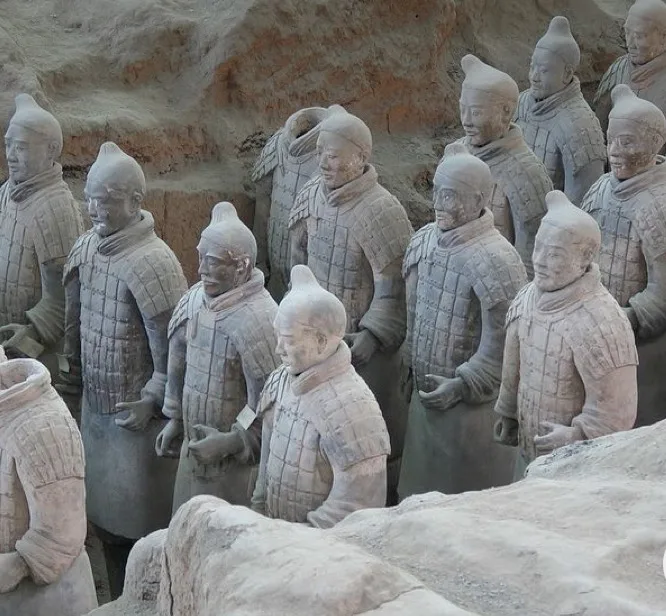
10.Qin Dynasty
(3rd century BC)
The Qin Dynasty’s military was one of the most powerful and effective forces in ancient history, playing a crucial role in unifying China and laying the foundations for the Chinese imperial system.
- Unification of China: The Qin Dynasty (221–206 BCE), under the leadership of Qin Shi Huang, successfully unified the various warring states of China. This unification was largely due to the military prowess and strategic brilliance of the Qin forces.
- Innovative Military Organization: The Qin military was highly organized and disciplined. They implemented strict hierarchical structures and merit based promotions, ensuring that capable leaders were in command. The army was divided into well defined units with clear command structures.
- Legalist Philosophy: The Qin state adopted Legalism, which emphasized strict laws and harsh punishments. This philosophy extended to the military, where discipline and obedience were paramount. The Legalist approach ensured that soldiers followed orders precisely, contributing to the effectiveness of the army.
- Advanced Weaponry: The Qin military utilized advanced weaponry for its time, including iron swords, crossbows, and various siege weapons. The crossbow, in particular, was a significant technological advantage, providing greater range and power than traditional bows.
- Mass Conscription: The Qin implemented mass conscription, creating a large and formidable army. Every able bodied male was required to serve, ensuring a steady supply of troops. This system allowed the Qin to maintain a large standing army and mobilize quickly for campaigns.
- Superior Tactics and Training: Qin soldiers underwent rigorous training and were well versed in various military tactics. The emphasis on training ensured that Qin forces were highly skilled and adaptable on the battlefield.
- Use of Cavalry: The Qin military effectively utilized cavalry, which provided mobility and speed. Cavalry units were crucial for reconnaissance, flanking maneuvers, and rapid assaults, giving the Qin a strategic advantage over their enemies.
- Engineering and Logistics: The Qin were adept at military engineering and logistics. They built extensive infrastructure, including roads and canals, to facilitate the rapid movement of troops and supplies. The construction of the Great Wall also demonstrated their engineering prowess and strategic foresight.
- Strategic Fortifications: The Qin built numerous fortifications to protect their territory and secure strategic points. These fortifications included walls, watchtowers, and fortresses, which helped defend against invasions and control conquered areas.
- Conquests and Expansion: The Qin military undertook numerous campaigns to expand their territory and consolidate their power. Key victories included the defeat of the powerful state of Zhao at the Battle of Changping and the conquest of the Chu, Wei, Yan, and other states.
- Standardization: Qin Shi Huang implemented a series of standardizations, including currency, weights and measures, and writing systems. This standardization extended to the military, where uniformity in equipment and procedures enhanced coordination and effectiveness.
- Centralized Control: The Qin established a centralized bureaucracy to manage their vast empire and military. This centralization allowed for efficient decision making, resource allocation, and coordination across different regions.
- Legal and Administrative Reforms: The Qin implemented significant legal and administrative reforms to support their military efforts. These reforms included land redistribution to reward soldiers, the establishment of military colonies, and the creation of a system of ranks and rewards to incentivize military service.
- Legacy: The military achievements of the Qin Dynasty laid the groundwork for the Han Dynasty and future Chinese empires. The unification of China under Qin rule set the stage for a centralized imperial system that would endure for millennia.

